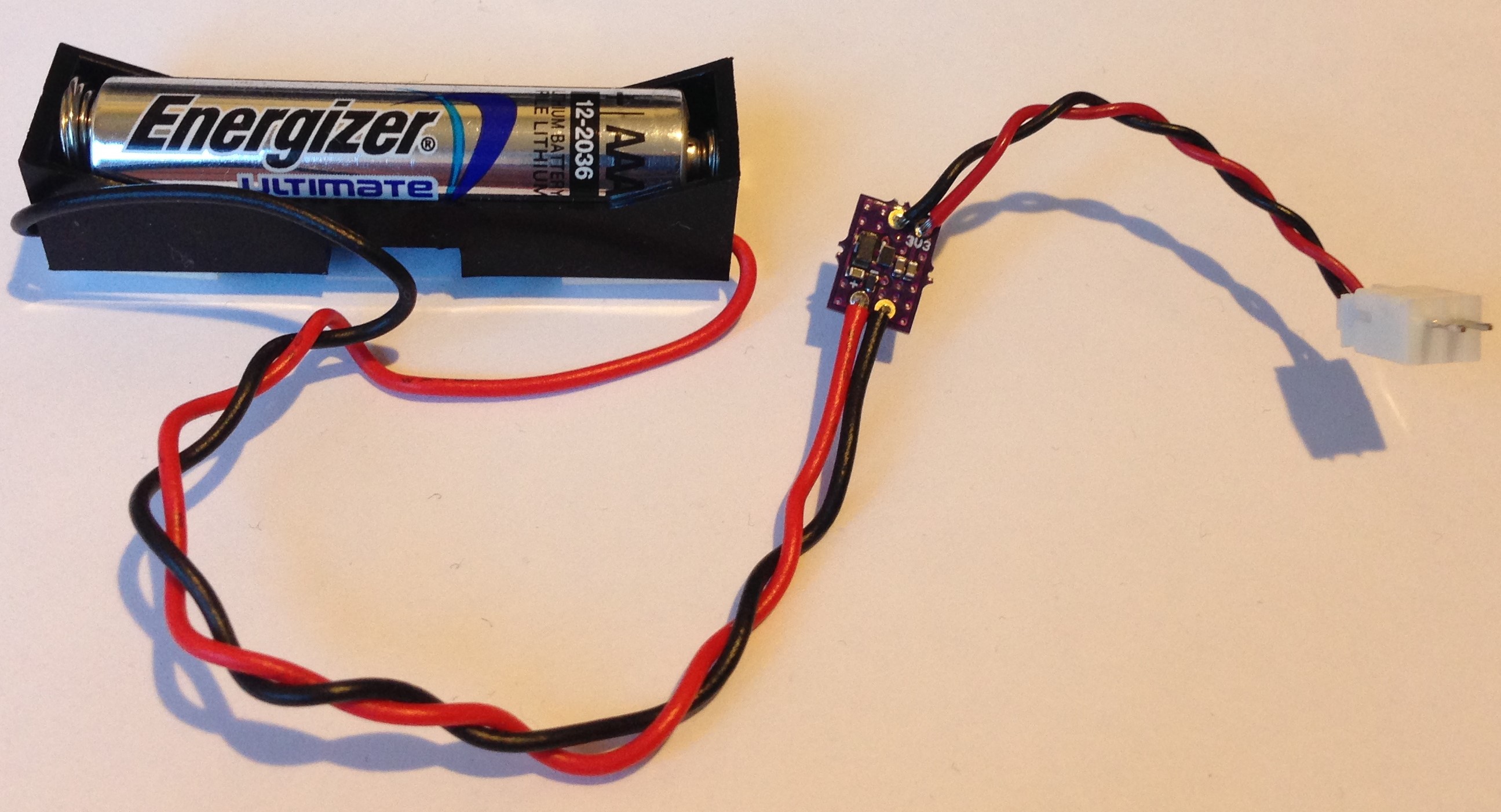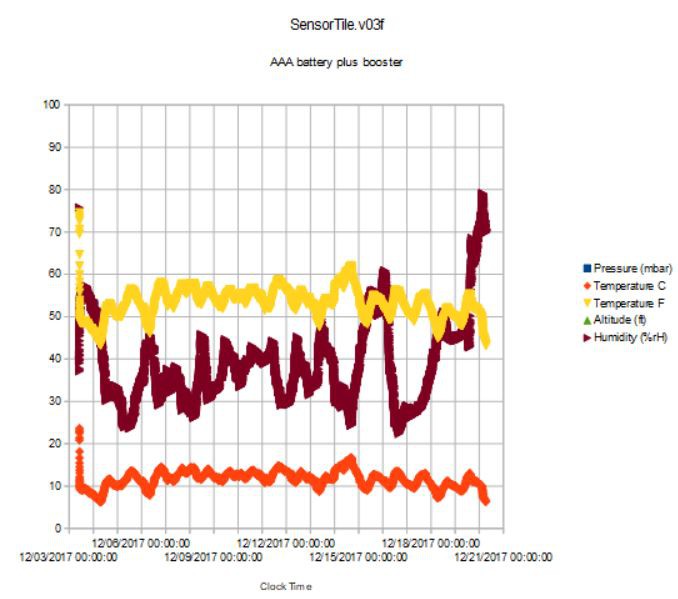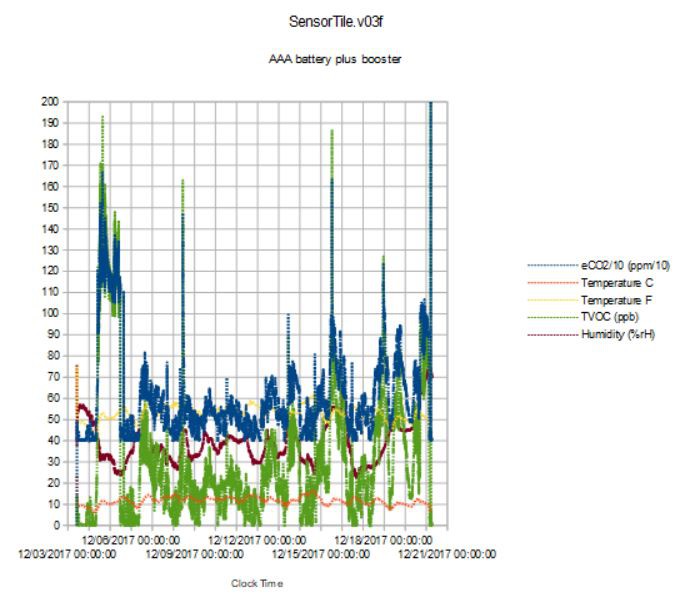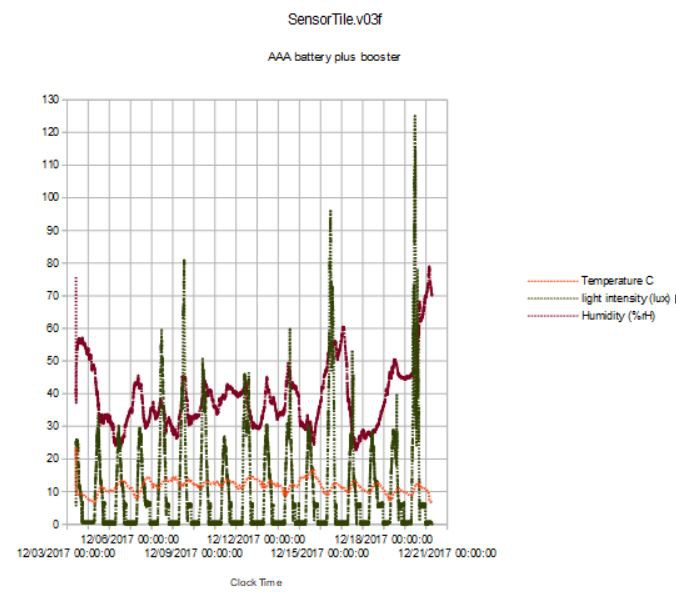12/21/17
Well after several months of struggling to get the average power usage down on the SensorTile to ~900 uA with both BLE and the CCS811 Air Quality sensor active, I decided to take a different tack and see what I could do with a larger battery. I didn't want to just do the obvious and literally increase the 4.2 V LiPo size to 2000 mAH, which would clearly let me run the Sensor Tile for ~ 2000 hours. Too easy!
I decided to try using an efficient boost converter instead so I could run the Sensor Tile on a single AAA battery, which has a typical capacity of 1200 mAH but only at 1.5 V or so. I chose the TPS610995 made by Texas Instruments which is a tiny WLCSP that is perfect for this application. It accepts voltage from 0.7 to 5.5 V, boosting anything less than 3.6 V to the fixed 3.6 V output I chose (several outputs are available) and passing unmolested any input above 3.6 V so a LiPo could still be used as the source.
I made a small breakout board for the TPS610995, soldered it to a AAA battery holder and soldered the other end to a JST connector and now I have a power source for the Sensor Tile that accepts any AAA battery and should power the Sensor Tile for about 1000 hours (~85% efficient at 1 mA).


I redesigned the Sensor Tile to make a variant the does away with the battery charger and voltage monitor and adds the TPS610995 as input to the NCV8170 LDO and submitted to the fab. This means I will be able to choose to use an AAA, AA, LiPo or just about any battery source from 0.7 V to 5 V and the system will work. Pretty convenient.
In the meantime, I used the TPS610995 breakout above to retest v.03f of the Sensor Tile since I know it uses ~900 uA of current from previous testing. I placed the SensorTile in its Bud box as usual and then under the portico of our driveway, where it is somewhat protected from the elements but still outside. I expected to get ~40 days of data out of the AAA battery and I adjusted the flash write frequency to once per minute to align the battery duration with the flash capacity. I am somewhat disappointed to find it stopped working after 18 days :<
Here is some of the data that was collected:

First pressure, temperature and humidity over the 18 day period. The altitude is a more interesting proxy for pressure and shows large variations and large deviations from the "normal" at our 1050 feet elevation; the pressure was uniformly higher than normal, sometimes much higher (like on 12/9).

Here is the temperature and humidity at a reasonable scale. The rapid humidity rise and temperature drop at the end of 12/19 shows a clue to the abrupt ending of the experiment; it rained in the early morning of 12/20 and, I suppose, one or more sensors got too wet to function. In fact, the last reading of the CCS811 air quality sensor was pegged at its maxima, a likely culprit.

There are large excursions and spikes in the air quality data, not sure what the cause of the latter is yet. It is interesting that the eCO2 estimate and the TVOC estimate are not simple scaled versions of one another; they are conveying different information as far as I can tell from this data plot.

Lastly, the ambient light intensity is more or less as expected but what could account for the 4x variation in the daily maxima in a shaded location? And odd that the peak is just before the midnight storm. And more curious, the highest light intensity spikes coincide with the spikes in the eCO2 data; is the sun or sun's reflection briefly shining on the Bud box on these days?
I think I will try again with a fresh AAA battery and some additional protection from the weather. I suppose for outside deployment, the latter deserves a bit more thought.
 Kris Winer
Kris Winer
Discussions
Become a Hackaday.io Member
Create an account to leave a comment. Already have an account? Log In.